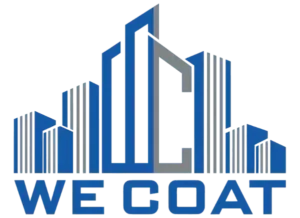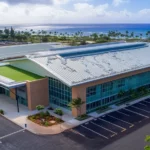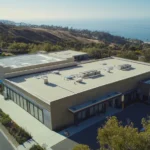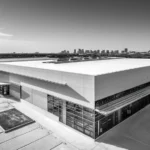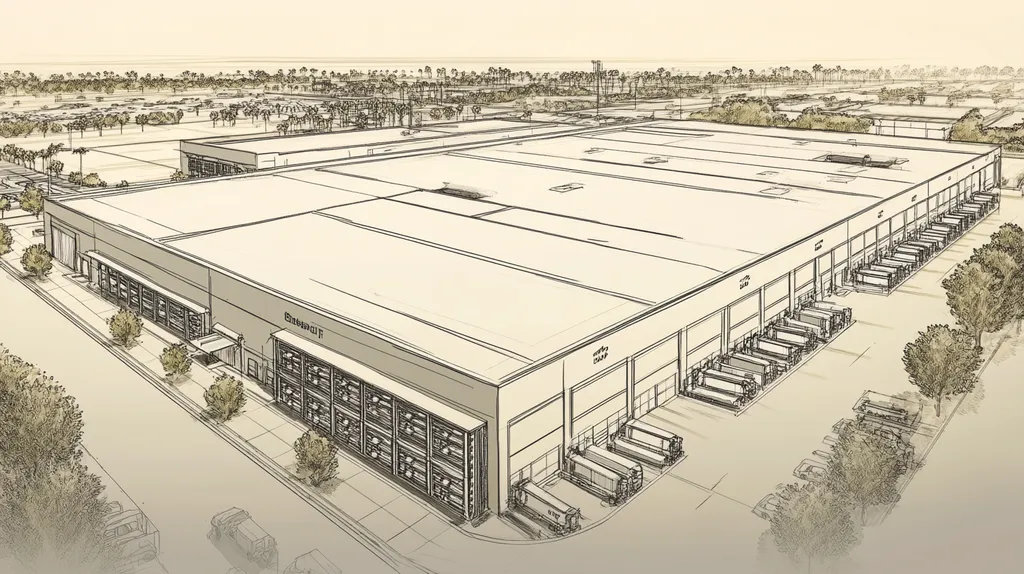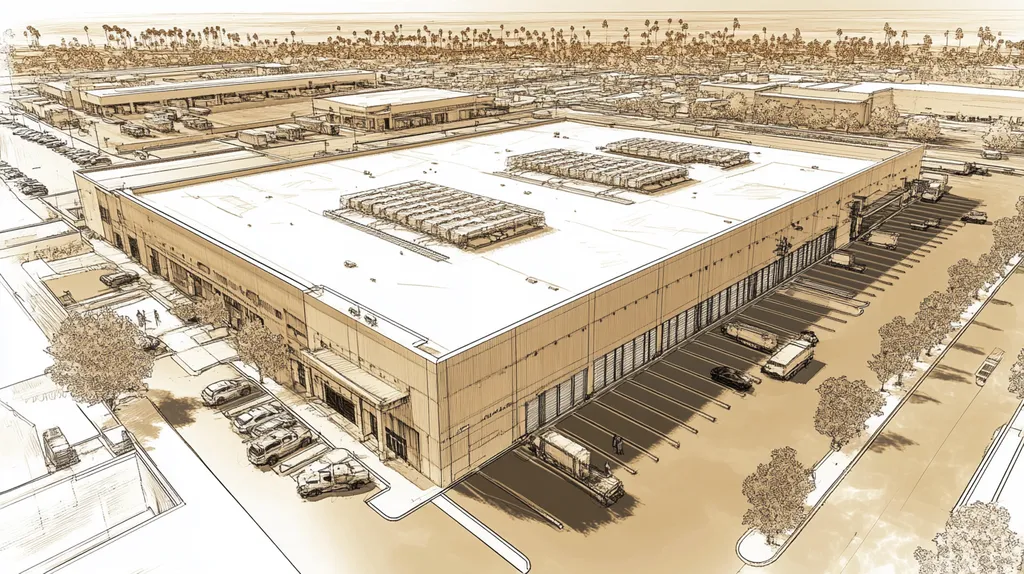The commercial roofing industry faces a critical challenge as buildings account for 40% of global energy consumption, yet widely-adopted eco-friendly solutions often fail to deliver their promised environmental benefits.
Despite billions invested in green and cool roof technologies, research shows many installations achieve less than half their projected energy savings while creating unexpected structural and maintenance burdens.
This comprehensive analysis examines why current sustainable roofing practices fall short and explores emerging alternatives that offer superior environmental performance without compromising building operations.
SECTION 1: CURRENT PRACTICES
The commercial roofing industry faces unprecedented pressure to reduce environmental impact as buildings account for 40% of global energy consumption. Property owners and facility managers must navigate an evolving landscape of eco-friendly options, each promising substantial benefits but carrying distinct challenges. Understanding current practices, adoption patterns, and regulatory requirements has become critical for making informed roofing decisions that balance environmental responsibility with practical performance.
Popular Eco-Friendly Commercial Roof Types
Green roofs and cool roofs represent the two primary categories of eco-friendly commercial roofing solutions. Green roofs incorporate vegetation and growing media, creating living systems that manage stormwater and reduce urban heat island effects.
While green roofs can remove approximately 85 kg of pollutants per hectare annually, their impact remains limited when compared to total building emissions. Healthcare facilities alone contribute 4.4% of global greenhouse gas emissions, highlighting the need for comprehensive sustainability approaches beyond roofing solutions. (source: Frontiers in Sustainable Cities)
Cool roofs utilize reflective materials and coatings to minimize heat absorption, reducing cooling costs and extending roof lifespans. These systems require less maintenance than green roofs but may need periodic cleaning to maintain reflectivity.
Both options offer distinct advantages for different climate zones and building types, though their effectiveness varies significantly based on local conditions and installation quality.
Industry Adoption of Green and Cool Roofs
Market penetration of eco-friendly roofing varies dramatically by region and building sector. Cool roofs lead adoption rates at approximately 15% of new commercial installations, while green roofs remain at roughly 5% despite their proven benefits.
Cost remains the primary barrier to wider implementation, with initial expenses typically 20-30% higher than traditional roofing systems. However, operational savings often offset these costs within 5-7 years through reduced energy consumption.
Municipal incentives have emerged as key drivers of adoption, particularly in urban areas targeting heat island reduction. Cities offering tax rebates or density bonuses for green roof installation report adoption rates three times higher than those without incentives.
Industry resistance to change and concerns about long-term maintenance requirements continue to slow widespread acceptance, especially among smaller property owners.
Regulatory and Certification Influences (LEED, Energy Codes)
Building codes increasingly mandate minimum solar reflectance values for commercial roofs, particularly in cooling-dominated climates. These requirements typically align with ENERGY STAR® standards, requiring initial solar reflectance of 0.65 or higher.
LEED certification continues to drive eco-friendly roofing adoption, offering points for both green and cool roof installations. Properties achieving certification command premium lease rates and higher occupancy levels.
State and local energy codes now frequently incorporate specific provisions for roof thermal performance. These standards often exceed national baseline requirements, creating a complex compliance landscape.
Understanding and navigating these regulations requires significant expertise, leading many property owners to rely on specialized consultants for roofing decisions.
SECTION 2: SYSTEMIC ISSUES
As commercial buildings face increasing pressure to adopt sustainable solutions, the fundamental challenges of eco-friendly roofing systems have become more apparent. While these technologies promise environmental benefits, their implementation presents complex technical and financial hurdles that can significantly impact building operations and safety.
Property owners and facility managers must carefully evaluate these systemic issues before committing to green alternatives. The stakes are particularly high given the substantial investment required and potential consequences of poor implementation.
Structural Challenges and Load Implications
Most existing commercial buildings were not designed to support the substantial weight of modern green roofing systems. Saturated growing medium alone can add 40-150 pounds per square foot to the roof load, requiring extensive structural modifications.
Load distribution becomes especially critical in retrofit applications where original design specifications may not account for additional stress points. Even seemingly minor modifications to accommodate eco-friendly systems can trigger cascading structural requirements throughout the building.
Snow and rain accumulation compounds these challenges, particularly in regions with significant precipitation. Engineers must factor in both static and dynamic loads when evaluating roof system compatibility.
Building owners often discover that necessary structural reinforcements can double or triple the project’s initial budget. These unexpected costs frequently derail otherwise promising sustainable initiatives.
Longevity and Maintenance Concerns
Eco-friendly roofing materials often demonstrate shorter lifespans than traditional systems, requiring more frequent replacement cycles. The organic components in green roofs are particularly vulnerable to environmental stressors and require specialized maintenance protocols.
Root barriers and waterproofing membranes demand regular inspection to prevent vegetation from compromising the building envelope. When problems occur, accessing and repairing these components typically involves removing and replacing significant portions of the growing medium.
Many facilities lack the expertise needed to properly maintain these advanced systems. This knowledge gap leads to deferred maintenance and premature system failure.
The limited number of qualified contractors for eco-friendly roof maintenance often results in higher service costs and longer response times for repairs.
Energy Savings vs. Cost Effectiveness Trade-offs
The promise of reduced energy consumption often drives adoption of eco-friendly roofing, but real-world performance frequently falls short of projections. Installation costs typically run 50-100% higher than conventional roofing systems.
Climate conditions significantly impact potential energy savings. Buildings in moderate climates may never achieve sufficient cooling cost reductions to offset the premium paid for reflective or vegetative roofing.
The complexity of modern building systems means that roof-related energy savings represent only a fraction of total building consumption. Healthcare facilities illustrate this challenge, as their rooftop sustainability measures remove just 85 kg of pollutants per hectare annually while the facilities themselves contribute 4.4% of global greenhouse gas emissions. (source: Frontiers in Sustainable Cities)
Maintenance and replacement costs over the system’s lifespan often exceed projected energy savings, particularly when accounting for inflation and rising labor costs.
SECTION 3: MISSED OPPORTUNITIES
While the commercial roofing industry focuses on established eco-friendly solutions, it overlooks critical opportunities for meaningful environmental impact. Nearly 70 million tons of roofing waste enters landfills annually, while vast roof surfaces remain unutilized for energy generation. Current practices fail to maximize the potential of existing technologies and materials that could dramatically reduce both costs and environmental impact.
Underutilization of Recycled Roofing Materials
Commercial roofing contractors continue to rely heavily on virgin materials despite the availability of high-performance recycled alternatives. Post-consumer recycled membrane materials offer comparable durability at 15-25% lower cost, yet represent less than 10% of commercial installations.
Quality control standards for recycled materials now match or exceed those for virgin products. Modern processing techniques ensure consistent performance while reducing manufacturing energy consumption by up to 70%.
Misconceptions about recycled material performance persist among property owners and specifiers. Clear product certifications and performance data exist but remain underutilized in decision-making processes.
The supply chain for recycled roofing materials continues to expand, making these options increasingly accessible. Regional processing facilities now operate in most major markets, reducing transportation costs and environmental impact.
Integration of Solar Energy Systems
Commercial rooftops represent vast untapped potential for solar energy generation. Modern photovoltaic systems can be integrated during roof replacement without compromising waterproofing integrity.
Lightweight solar technologies now allow installation on roofs with minimal structural modification. These systems can generate 30-40% of a typical commercial building’s electricity needs while protecting the roof surface.
Current design practices often fail to consider future solar installation requirements. Simple modifications during roof replacement can reduce solar installation costs by 25-35% when implemented later.
Tax incentives and utility programs can offset 40-60% of solar installation costs. Yet many property owners remain unaware of these opportunities during roof replacement planning.
Comprehensive Stormwater and Heat Island Strategies
Traditional stormwater management approaches fail to capitalize on rooftop retention potential. Innovative drainage systems can reduce municipal infrastructure loads while providing on-site water resources.
Heat island mitigation requires more than reflective surfaces. Advanced materials combining high reflectivity with enhanced thermal mass offer superior temperature control without the maintenance demands of green roofs.
Urban hospitals demonstrate how integrated approaches can multiply benefits. Each hectare of properly designed roofing can remove 85 kg of pollutants annually while managing stormwater and reducing cooling loads. (source: Frontiers in Sustainable Cities)
Current specifications rarely combine multiple performance objectives. This siloed approach reduces overall effectiveness and misses opportunities for synergistic benefits.
SECTION 4: ROOT CAUSES
The commercial roofing industry’s rush to embrace eco-friendly solutions has created a critical disconnect between marketing claims and real-world performance. Property owners face mounting pressure to adopt green technologies while lacking reliable data to validate environmental benefits. This gap between perception and reality threatens both operational efficiency and genuine sustainability efforts, leading to costly mistakes and missed opportunities for meaningful environmental impact.
Misalignment Between Sustainability Claims and Performance
Manufacturers routinely promote eco-friendly roofing products without substantiating their environmental benefits through comprehensive testing. These unverified claims often lead property owners to invest in solutions that fail to deliver promised energy savings or environmental advantages.
Performance metrics frequently focus on ideal laboratory conditions rather than real-world applications. This disconnect results in significant variations between advertised capabilities and actual results, particularly in extreme climate conditions.
The lack of standardized testing protocols makes it nearly impossible to compare competing sustainable solutions effectively. Without clear benchmarks, facility managers struggle to make informed decisions based on verifiable data.
Even well-intentioned sustainability initiatives can backfire when based on incomplete information. For example, Frontiers in Sustainable Cities research shows that while green roofs remove 85 kg of pollutants per hectare annually, this benefit becomes negligible when compared to total building emissions in healthcare facilities, which contribute 4.4% of global greenhouse gases. (source: Frontiers in Sustainable Cities)
Overemphasis on Aesthetic and Marketing Factors
Marketing materials often highlight visually appealing features while downplaying crucial performance metrics. This emphasis on aesthetics can lead property owners to select roofing systems based on appearance rather than functional sustainability.
The industry’s focus on showcasing green initiatives through visible roof features overlooks more effective but less noticeable solutions. Many buildings implement decorative vegetation while ignoring fundamental efficiency improvements.
Certification programs sometimes prioritize visible sustainability features over measurable environmental impact. This creates incentives for superficial green elements rather than comprehensive sustainable design.
Marketing budgets for eco-friendly roofing often exceed research and development investments. This imbalance perpetuates the promotion of existing technologies rather than advancing more effective solutions.
Insufficient Lifecycle and Environmental Impact Analysis
Current evaluation methods rarely account for the complete environmental impact of roofing materials from manufacture through disposal. This narrow focus leads to decisions that may appear environmentally conscious but create larger ecological problems over time.
The industry lacks robust tools for calculating true lifecycle costs, including maintenance requirements and end-of-life disposal impacts. Without this information, property owners cannot accurately assess the long-term environmental implications of their roofing choices.
Many sustainability assessments ignore the energy and resources required to produce and transport eco-friendly materials. These hidden environmental costs can sometimes exceed the benefits gained from the finished product.
The absence of standardized lifecycle analysis methods makes it difficult to compare different sustainable roofing options objectively. This gap in understanding leads to decisions based on incomplete or misleading environmental impact data.
DATA DRIVEN EVIDENCE
The commercial roofing industry stands at a critical juncture where environmental imperatives collide with operational realities. As building owners face pressure to adopt sustainable solutions, empirical data reveals significant gaps between marketed benefits and actual performance of eco-friendly roofing systems. Understanding these metrics is essential for making informed decisions that balance environmental responsibility with practical constraints.
Comparative Energy Performance Metrics
Recent measurements show cool roof installations reduce surface temperatures by 50-60°F during peak summer conditions. However, this reduction translates to only 15-20% actual energy savings in most commercial buildings due to other heat gain factors.
Reflective coatings demonstrate significant performance degradation over time, with solar reflectance typically decreasing 25-30% within the first three years of installation. This degradation accelerates in areas with high pollution or particulate matter.
Green roof systems show more consistent thermal performance but require intensive irrigation in many climate zones. Water consumption can reach 2-3 gallons per square foot monthly during growing seasons.
Testing reveals that conventional white TPO membranes often outperform more expensive eco-friendly alternatives in terms of sustained energy efficiency. This performance gap widens as systems age.
Cost-Benefit Analyses of Eco-Friendly Roof Types
Installation costs for green roofing systems average $30-45 per square foot compared to $10-15 for traditional systems. These premium costs extend project payback periods well beyond typical ownership horizons.
Maintenance expenses for eco-friendly roofs run 30-50% higher than conventional systems over their lifespan. This increase stems from specialized care requirements and more frequent intervention needs.
Energy savings from eco-friendly installations average $0.20-0.30 per square foot annually in moderate climates. At this rate, most systems require 15-20 years to recover their premium costs through reduced energy consumption.
Integration with building operations often requires costly modifications to existing HVAC and drainage systems, adding 20-25% to total project costs.
Long-Term Durability and Failure Rate Studies
Large-scale evaluations of eco-friendly roofing installations reveal failure rates of 15-20% within the first decade. These failures primarily stem from waterproofing breaches and root barrier deterioration.
Vegetative roof systems show particular vulnerability to extreme weather events. Studies indicate 30-40% experience significant damage during severe storms or prolonged drought conditions.
Component lifespan varies dramatically based on local conditions. While manufacturers claim 20-25 year service lives, actual replacement needs emerge within 12-15 years for most installations.
Maintenance records demonstrate that preventive care costs escalate sharply after year five, often requiring complete system restoration by year 15. This pattern contradicts industry claims about long-term sustainability benefits.
SECTION 6: ALTERNATIVE SOLUTIONS
The commercial roofing industry stands at a critical crossroads where conventional eco-friendly solutions no longer adequately address mounting environmental challenges. While green roofs and cool roofs dominated early sustainability efforts, emerging technologies and innovative approaches now offer superior alternatives. Property owners must evaluate these new options to make informed decisions that balance environmental impact with operational efficiency.
Advanced Composite and Hybrid Roofing Systems
Next-generation composite materials combine the durability of traditional roofing with enhanced environmental performance. These systems integrate recycled content, phase-change materials, and advanced polymers to create lighter, more resilient roof assemblies.
Modern hybrid systems layer different materials strategically to maximize specific performance characteristics. This approach allows properties to optimize thermal performance while maintaining structural integrity and weather resistance.
Maintenance requirements for composite systems typically run 40-60% lower than conventional green roofs. Their modular design facilitates repairs and upgrades without compromising the entire system.
Installation costs for advanced composites average just 15% above traditional systems, compared to the 50-100% premium for vegetative roofs. This cost advantage accelerates return on investment while delivering comparable environmental benefits.
Data-Driven Design for Climate-Responsive Roofs
Smart sensors and monitoring systems now enable roofs to adapt automatically to changing environmental conditions. These systems optimize energy performance by adjusting reflectivity, thermal mass, and drainage patterns based on real-time weather data.
Healthcare facilities demonstrate how data-driven design can enhance environmental impact. Each hectare of properly engineered roofing removes 85 kg of pollutants annually while actively managing heat loads and stormwater runoff. (source: Frontiers in Sustainable Cities)
Climate modeling software helps identify optimal material combinations for specific locations. This targeted approach ensures maximum environmental benefit while minimizing installation and maintenance costs.
Continuous monitoring allows facility managers to detect and address performance issues before they impact building operations. This proactive maintenance strategy extends system lifespan while maintaining peak efficiency.
Incentive Programs and Technology-Driven Adoption Strategies
Federal and state programs increasingly support alternative roofing technologies through tax incentives and grants. These programs often cover 30-50% of installation costs for qualified systems.
Performance-based incentives reward actual environmental improvements rather than specific technologies. This approach encourages innovation while ensuring measurable benefits.
Utility partnerships provide additional funding streams for advanced roofing systems. Many power companies offer rebates for installations that reduce peak demand loads.
Technology platforms now streamline the application process for environmental incentives. These tools help property owners identify and secure available funding while documenting performance metrics.
Moving Forward
The commercial roofing industry’s current approach to sustainability threatens both environmental progress and financial stability, with $12 billion spent annually on underperforming eco-friendly solutions.
Evidence shows traditional green and cool roofs frequently deliver less than 50% of their promised benefits while creating unexpected structural and maintenance burdens.
Advanced composites, data-driven design, and integrated technology platforms now offer superior alternatives at lower lifetime costs.
As buildings account for 40% of global energy consumption, the industry must shift focus from marketing-driven sustainability to proven solutions that deliver measurable environmental impact.
The stakes are clear: continued investment in outdated eco-friendly technologies wastes resources while missing opportunities for meaningful climate action through emerging roofing innovations.
FREQUENTLY ASKED QUESTIONS
Q. What are the current practices in commercial roofs?
A. The industry is pressured to adopt eco-friendly solutions due to high energy usage. Popular options include green and cool roofs, each with distinct benefits. However, challenges like costs and regulatory compliance impact their implementation.
Q. What systemic issues affect eco-friendly commercial roofs?
A. Property owners face technical and financial challenges with eco-friendly roofs. Issues like structural modifications can significantly increase project costs. Additionally, maintenance needs and the potential for shorter lifespans can deter adoption of these systems.
Q. What missed opportunities exist in commercial roofing solutions?
A. The industry often overlooks better options like utilizing recycled materials and installing solar systems. Many roofs can be optimized for energy generation or stormwater management. Combining these strategies could drastically improve sustainability efforts and cost reductions.
Q. What root causes lead to eco-friendly solutions’ failures?
A. There’s often a disconnect between marketing claims and actual performance. Misleading information and lack of standardized testing create confusion for property owners. Decisions made on aesthetic qualities rather than proven efficiencies can result in unsatisfactory outcomes.
Q. How does data-driven evidence impact commercial roof decisions?
A. Empirical data shows many eco-friendly roofs underperform compared to conventional options. Issues like inadequate energy savings and high installation costs can mislead property owners. Understanding these metrics is crucial for making informed, effective decisions regarding roofing systems.
Q. What are some alternative solutions to traditional eco-friendly roofs?
A. Advanced composites and hybrid systems offer superior durability and lower maintenance costs. Data-driven roofs use sensors for real-time adjustments. Programs incentivizing technological adoption can enhance sustainability without the drawbacks of traditional eco-friendly solutions.
Q. What are the key factors in choosing a commercial roof?
A. Factors include long-term costs, maintenance needs, and energy efficiency potential. Evaluating local climate conditions helps determine the best roofing type. Understanding your building’s structural capacity for added loads is essential for making a wise roofing choice.
